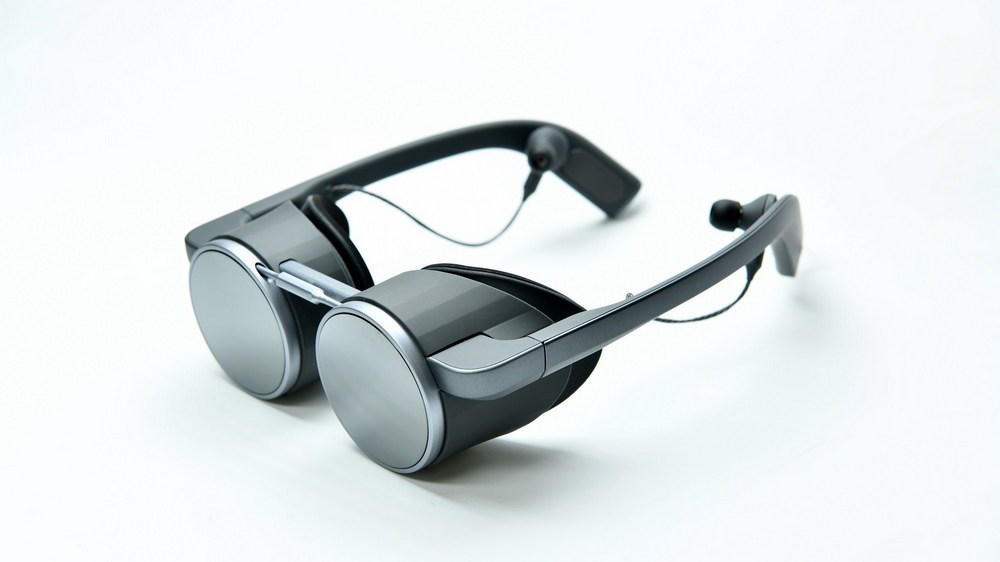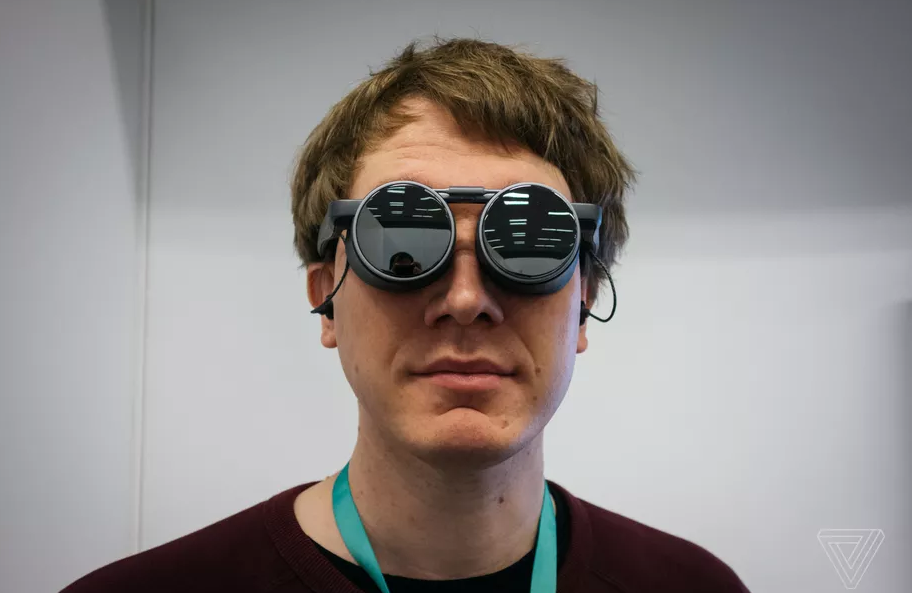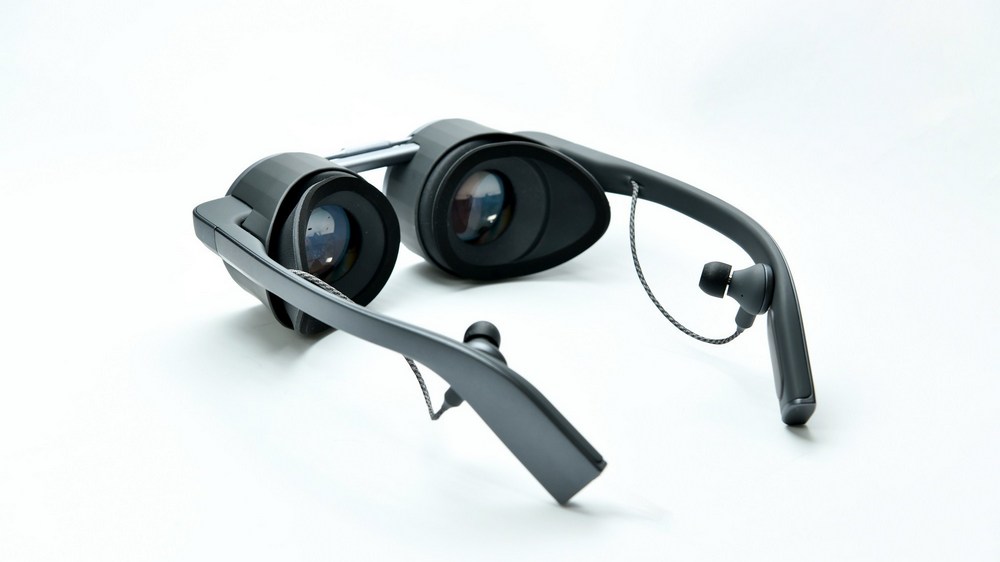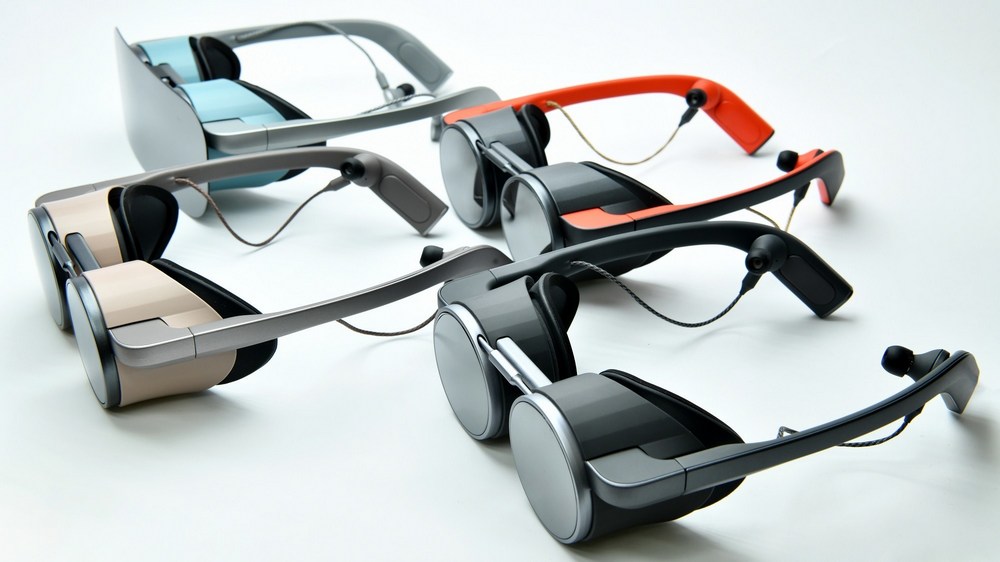Reviews of Panasonic’s Ultra-Slim VR Glasses Showcased During CES 2020
During the CES 2020 this week, Panasonic unveiled its new virtual reality glasses which have an ultra-slim form factor and deliver a better quality image. But it is still plagued with some errors and limitations.

The Panasonic VR glasses showcased at the CES are a prototype and don’t have a product name yet. They might not even go into full production. Panasonic describes them as “VR Eyeglasses”, emphasizing the form factor as that of glasses in contrast to a VR headset like the Valve Index or Oculus Rift.
According to the press release announcing the presentation of the glasses, Panasonic stated that it is working on a product that could be used for viewing sports events in virtual reality and in virtual travel in anticipation of the planned rollout of 5G connectivity in major cities across the world.
In a press statement, Panasonic manager Joseph Cates stated that the company wanted to demonstrate that it is possible to build lightweight and fashionable virtual reality glasses which deliver very high video quality. The full range along with the form factor of the VR glasses are, however, yet to be determined. The price of the Panasonic virtual reality glasses will most likely lie on the upper end for consumer VR devices.
As far as form factor goes, the Panasonic glasses do look a bit regular, with some steampunk aviator look.

The Panasonic Prototype are Glasses and not a Headset
It was important for Panasonic that it made that distinction of its prototype being virtual reality glasses rather than a virtual reality headset.
The Panasonic glasses provide some technical improvements over other VR hardware solutions that are already in the market. It is built with micro OLED display panels that have been co-developed by both Panasonic and Kopin. The glasses have a very high resolution with no indication at all of a “screen-door effect” which is still common in most virtual reality hardware. The Panasonic glasses are also the first to support HDR. During the CES demonstration, this feature came out clearly in a CG demo of the inside of a Japanese temple which even showed light bouncing off golden decorations!
Panasonic is also utilizing its own audio technology in the VR glasses. It relies on Technics drivers that are in the earbuds to deliver a very rich and dynamic audio output. Panasonic also stated that it used optical designs from its Lumix camera division and other related signal processing technologies found in its Blu-ray players and TVs.
Comfort and Connectivity
Early testers have praised the Panasonic VR glasses’ ultra-slim form factor. It has been described as reminiscent of steampunk aviator-style glasses as seen below.

The Verge tester was, however, not impressed with the front load of the glasses that is more likely to slip off the nose if the wearer leans forward. The situation is further worsened by the thick PC cables. From tests so far, it is apparent that the glasses have an uneven weight distribution as well as low slip resistance.
During CES 2020, Panasonic had a second and inoperable prototype of the glasses on the stand. Based on the target end product, it is much easier to wear and is connected to a smartphone or pocket computer via a USB-C cable.
Display, Optics and IPD Controller
Apart from their exceptionally slim form factor, the Panasonic glasses also have built-in micro-OLED displays co-developed with the Kopin brand. According to Panasonic, these displays offer a UHD resolution, corresponding to 3,840 by 2,160 pixels. It’s still unclear whether this resolution is applicable to one eye or both eyes.

The Verge tester revealed that there was almost no screen-door effect with the glasses. The Panasonic glasses are also the first VR glasses/headsets to support HDR which delivers very impressive images. They also feature built-in pancake lenses which are quite a novelty.
UploadVR reported that the Panasonic VR glasses display supports 60 frames per second and that the distance between the displays and the lens is annually adjustable a seen in the video below:-
Testers did not experience a fly screen effect but there were strange ghosting effects with either white light or white text. A Techradar reviewer also mentioned display errors but overall, many of the testers were impressed with their HDR displays.
Even Oculus founder Palmer Luckey was impressed with the glasses and described them as “very cool”. He praised their high pixel density as well as their integrated mechanism for individual focusing. Luckey is known for being a sharp critic of the VR industry.
The Panasonic VR headset is very cool! Great pixel density and ingenious IPD/focus personalization. pic.twitter.com/cFS7LwvRa8
— Palmer Luckey (@PalmerLuckey) January 8, 2020
Field of View, Audio and Tracking
The field of view of the Panasonic VR glasses is smaller due to the small OLED displays. This resulted in a “more rectangular” image according to The Verge. An Engadget review also mentioned the glasses’ comparatively “small viewing window”. Panasonic confirmed to UploadVR that the current prototype of the glasses has a field of view of approximately 70 degrees. Panasonic says that a field of view of 100 degrees is realizable with larger OLED displays.
Reviewers praised the VR glasses audio quality which is achieved through integrated earbuds with Panasonic’s own Technics hardware.
The Panasonic prototype currently provides only three-degrees-of-freedom tracking. Panasonic told UploadVR that it was also contemplating space tracking although this option would increase the weight of the glasses.
The current Panasonic prototype as showcased during the CES 2020 is a portable and high-definition virtual reality video glasses which can be paired with an external player. The glasses are not intended to be used as gaming glasses as there is no controller or room tracking feature.
Conclusion
Chances that Panasonic will sell these virtual reality glasses as a consumer product are quite slim. The company is instead directing users to the range of commercial applications that could emerge alongside the rollout of 5G networks in the coming years. These include use-cases such as virtual travel and virtual reality sports.
The Panasonic demo however demonstrates the VR hardware possibilities. It shows that it is possible to build virtual reality glasses with very small form factors and which are still of excellent quality. It is like the harbinger of things to come and the kind of hardware and form factor that could make VR hardware more appealing to the mainstream public. Its Achilles’ Heel is of course the field of view: the Panasonic virtual reality hardware will only be interesting if it can offer a high field of view just like other conventional virtual reality headsets.
https://virtualrealitytimes.com/2020/01/12/reviews-of-panasonics-ultra-slim-vr-glasses-showcased-during-ces-2020/https://virtualrealitytimes.com/wp-content/uploads/2020/01/Panasonic-Virtual-Reality-Glasses-Prototype-600x337.jpghttps://virtualrealitytimes.com/wp-content/uploads/2020/01/Panasonic-Virtual-Reality-Glasses-Prototype-150x90.jpgInventionsTechnologyDuring the CES 2020 this week, Panasonic unveiled its new virtual reality glasses which have an ultra-slim form factor and deliver a better quality image. But it is still plagued with some errors and limitations. The Panasonic VR glasses showcased at the CES are a prototype and don’t have a...Sam OchanjiSam Ochanji[email protected]EditorVirtual Reality Times - Metaverse & VR
